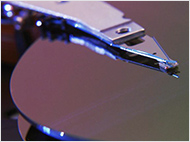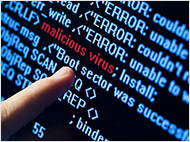Установка новой ОС: что делать, если вы удалили разделы
- Опубликовано: Май 28, 2014
- Обновлено: Сентябрь 5, 2021
В процессе переустановки Windows или экспериментов с альтернативными системами пользователи рискуют потерять оригинальную структуру разбиения диска на разделы. В этой статье даны рекомендации для тех случаев, когда вы удалили разделы на диске с важными данными.

“Вчера я собственными руками уничтожил все, что было на моем жестком диске с объемом 1.5 Тб”, сокрушается один из пользователей в сообщении, полученном нашей службой техподдержки. “Я хотел попробовать установить Ubuntu на ноутбук с альтернативной загрузкой. Новая система должна была встать на свободное место, которого хватало. И похоже на то, что в процессе установки я не обратил внимания и разрешил инсталлятору создать один большой раздел на весь диск. Теперь у меня есть Ubuntu, но нет возможности двойной загрузки, исчезли разделы Windows и, самое главное, потерялись все мои файлы. Помогите!”
Нашим специалистам приходится практически каждый день сталкиваться с подобными призывами о помощи. Во время установки новой версии Windows, Linux и Ubuntu удаляются или нарушаются разделы. Пользователи пытаются экспериментировать с альтернативной загрузкой, и в результате система не видит разделы, теряются файлы и папки…
Если вы оказались в подобной ситуации – просто остановитесь. Не пытайтесь, что-либо сделать с вашей системой. Вы только ухудшите свое положение, окончательно уничтожив данные, которые все еще могли оставаться на диске. Самым простым способом (для нас) было бы снять жесткий диск, подключить его к другому компьютеру и запустить программу восстановления данных. Однако мы понимаем, что не у всех есть запасной компьютер, и далеко не все пользователи настолько хорошо знакомы с «железом», чтобы вытащить диск и подключить его к другой системе.
Поэтому мы советуем использовать резервный источник для загрузки и восстановления системы, например, USB флэшку. Выключите компьютер и загрузитесь с флэшки, конечно если она у вас есть. Если флэшки нет, то вы можете сделать ее загрузочной на другом компьютере.

Создание загрузочно-восстановительной флэшки
В этой статье мы не будем подробно описывать процесс создания загрузочной флэшки с утилитой восстановления данных. В сети вы найдете много информации о том, как сделать загрузочную флэшку и загрузить с нее Windows. Используйте Google. Введите в строку поиска “загрузочная флэшка для восстановления Windows” и откройте первую же найденную ссылку. Вы узнаете все необходимое. В зависимости от того, какую версию Windows вы используете, процесс будет простым или очень простым.
Если у вас установлена ОС Windows Vista и Windows 7, нужно будет скопировать скрытые файлы и создать загрузочную флэшку с помощью стороннего программного обеспечения (мы в East Imperial Soft используем Rufus, но есть также RMPrepUSB, UNetbootin, Universal USB Installer и Windows 7 USB download tool).
Если вы используете Windows 8 или 8.1, то вам достаточно встроенной функции, которая называется “Создать восстановительный диск”.
Установка программы восстановления данных
Очень важно, чтобы на загрузочной флэшке была уже установлена программа восстановления данных. Скачайте и установите на вашу новую загрузочную флэшку Magic Partition Recovery. Чтобы активировать и использовать программу, вам нужно приобрести лицензионный ключ.
Запишите на листе бумаги путь, по которому установлена программа восстановления. Откройте папку и запишите имя исполнительного файла (например, “dpart.exe”). Эту информацию вы должны будете ввести в командную строку, чтобы запустить программу после загрузки с флэшки.
Не забудьте записать ваш регистрационный ключ, иначе программа не откроется.
Восстановление данных
Во время загрузки с флэшки вы увидите на экране несколько опций. Обратите внимание, что любая из опций автоматического восстановления не поможет вам вернуть данные. Выберите “командная строка” и запустите из нее программу восстановления. Именно здесь вам понадобится вся та информация, которую вы записали на листе бумаге.
Все остальное просто. Magic Partition Recovery просканирует ваш жесткий диск, определит удаленные разделы и восстановит файлы.
Понравилась статья?
Будьте на связи






Комментарии